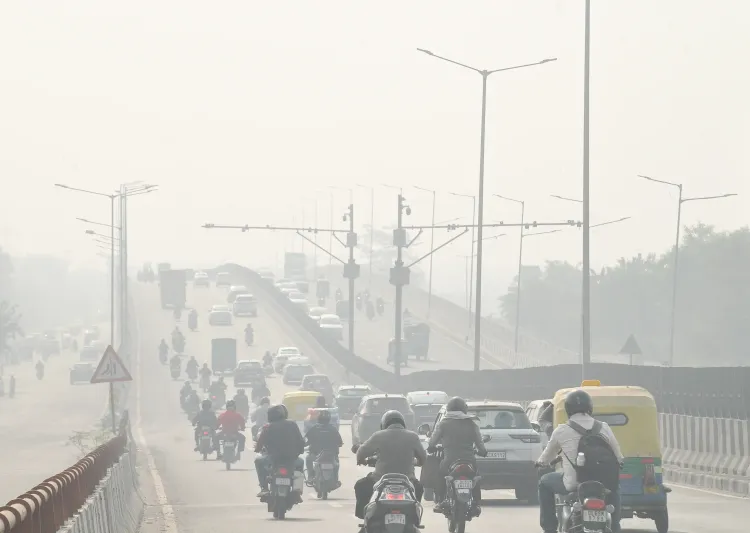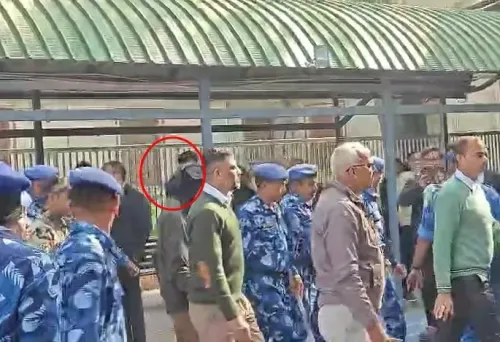Why is Delhi-NCR's AQI Persisting in the 'Very Poor' Range?

Synopsis
Key Takeaways
- Delhi-NCR's AQI is dangerously high.
- Several areas have recorded 'severe' AQI levels.
- Supreme Court hearings are addressing the pollution crisis.
- Key factors include stubble burning and stagnant weather.
- Immediate action is needed to protect public health.
New Delhi, Nov 17 (NationPress) The Air Quality Index (AQI) in Delhi-NCR continues to hover in the 'very poor' to 'severe' category on Monday, as a dense layer of smog envelops the national capital. At 6:00 a.m., Delhi reported an average AQI of 360. However, six monitoring stations recorded AQI levels exceeding 400, categorizing them as 'severe'.
Specific readings include Alipur with 386, Anand Vihar at 384, Ashok Vihar at 392, Chandni Chowk at 383, ITO at 394, and Lodhi Road at 337. Other stations like Mundka (396), Nehru Nagar (389), and Sirifort (368) also reported concerning figures.
In addition, Bawana (427), DTU (403), Jahangirpuri (407), Narela (406), Rohini (404), and Wazirpur (401) recorded 'severe' AQI levels.
The Supreme Court is scheduled to resume hearings on public interest litigation (PIL) regarding the alarming levels of air pollution in the national capital and surrounding areas.
This hearing is crucial as stubble burning and stagnant weather conditions continue to push Delhi's air quality into the 'severe' category.
According to the cause list on the Apex Court's website, a Bench led by Chief Justice of India (CJI) B.R. Gavai, along with Justices K. Vinod Chandran and N.V. Anjaria, will address the matter further on November 17.
During the previous hearing on November 12, the CJI Gavai-led Bench expressed deep concern over the worsening air quality, despite the implementation of the Graded Response Action Plan (GRAP), and directed the governments of Punjab and Haryana to submit detailed affidavits on measures taken to combat stubble burning.
The Supreme Court acknowledged submissions indicating that the AQI had exceeded 450 in several areas of Delhi-NCR.
Senior advocate Gopal Sankaranarayanan highlighted that even routine construction activities, including drilling near the Supreme Court premises, were ongoing despite hazardous air conditions.
"For the next few days, such activities should be halted," Sankaranarayanan urged the Apex Court.
Amicus curiae, senior advocate Aparajita Singh, also pointed out inconsistencies in official pollution data and warned that the situation was becoming 'very dangerous'.
The CJI Gavai-led Bench, which is closely monitoring the issue, previously requested a report from the Commission for Air Quality Management (CAQM) regarding its monitoring and enforcement strategies and suggested that the Centre consider imposing strict penalties, including arrests, to deter farmers from burning crop residue.
Recently, Justice P. S. Narasimha from the Supreme Court advised advocates to transition to virtual hearings, citing the risk of 'permanent damage' from Delhi's toxic air.









